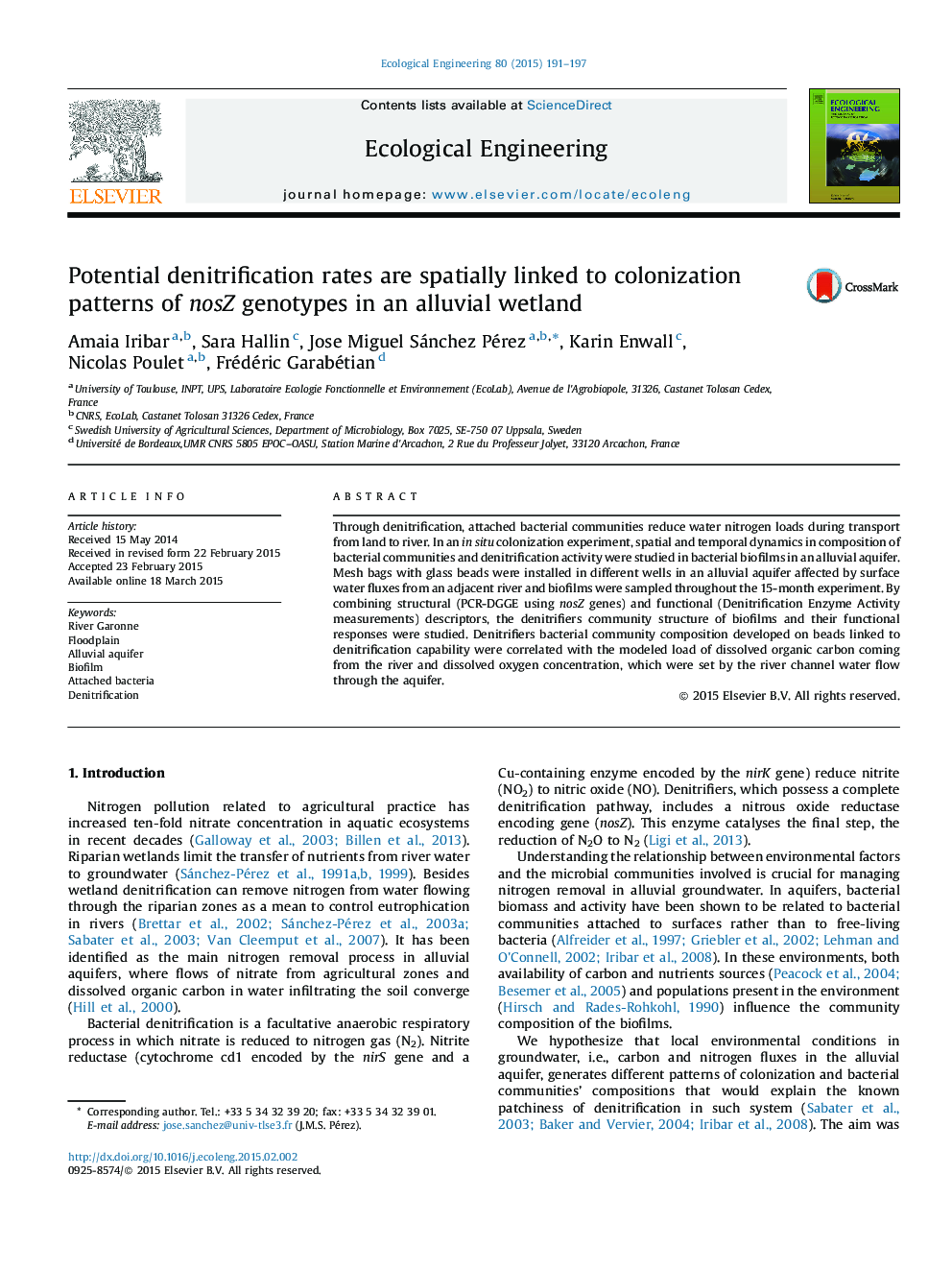| Article ID | Journal | Published Year | Pages | File Type |
|---|---|---|---|---|
| 4389045 | Ecological Engineering | 2015 | 7 Pages |
•Glass beads were used to study colonization of biofilms from an alluvial aquifer.•Molecular (DGGE) and functional (DEA) descriptors were used to study biofilms.•Environmental factors (DOC and DO) determined DEA and community composition.•Denitrifiers communities were correlated with dissolved organic carbon loads.
Through denitrification, attached bacterial communities reduce water nitrogen loads during transport from land to river. In an in situ colonization experiment, spatial and temporal dynamics in composition of bacterial communities and denitrification activity were studied in bacterial biofilms in an alluvial aquifer. Mesh bags with glass beads were installed in different wells in an alluvial aquifer affected by surface water fluxes from an adjacent river and biofilms were sampled throughout the 15-month experiment. By combining structural (PCR-DGGE using nosZ genes) and functional (Denitrification Enzyme Activity measurements) descriptors, the denitrifiers community structure of biofilms and their functional responses were studied. Denitrifiers bacterial community composition developed on beads linked to denitrification capability were correlated with the modeled load of dissolved organic carbon coming from the river and dissolved oxygen concentration, which were set by the river channel water flow through the aquifer.
